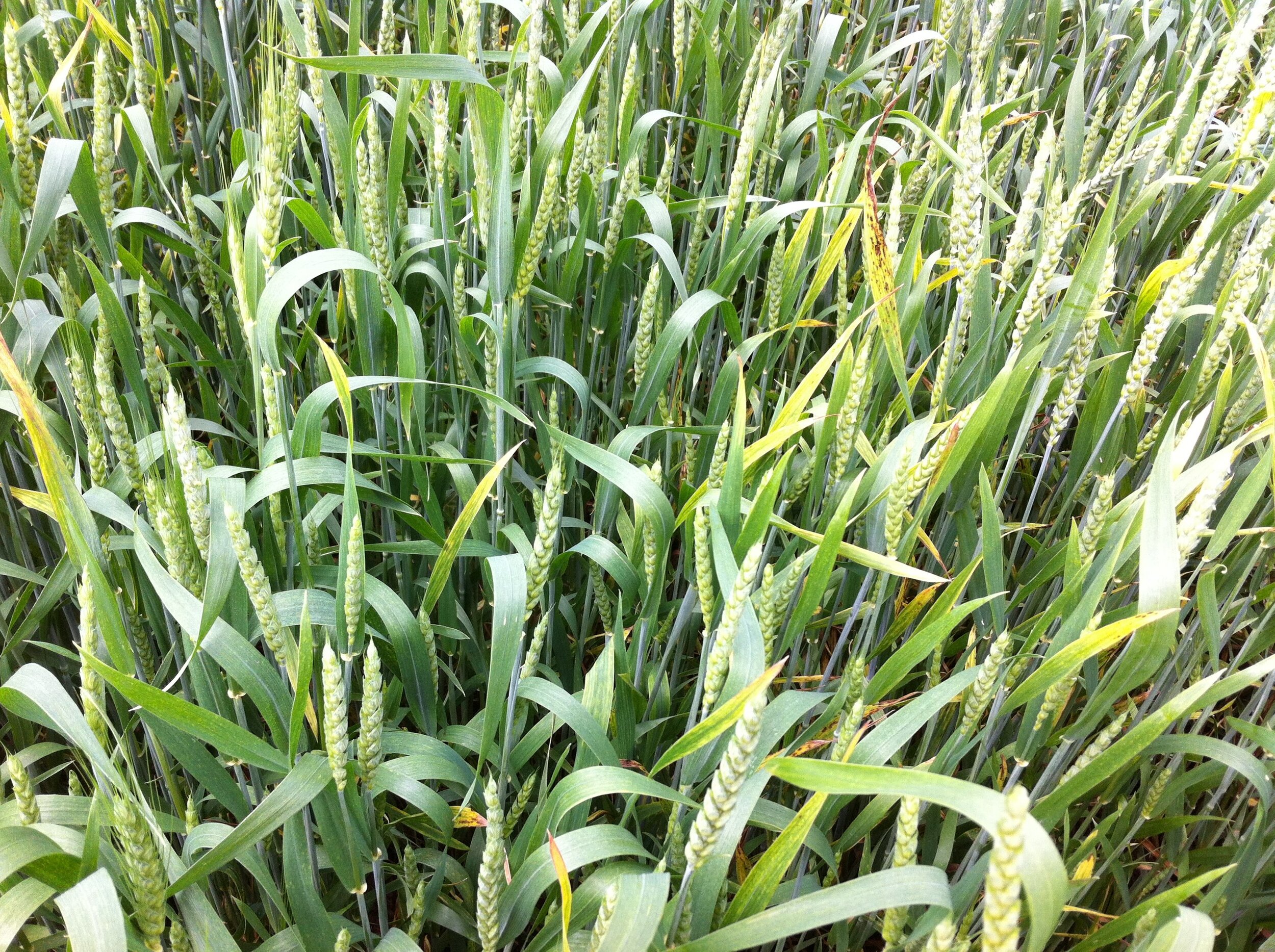Changes of BYDV and CYDV Infection in Commercial Wheat of Western Kentucky
Raul T. Villanueva and Carl Bradley, University of Kentucky
INTRODUCTION
Barley yellow dwarf is one of the most devastating diseases in wheat worldwide. Two viruses, Barley yellow dwarf virus (BYDV) and Cereal yellow dwarf virus (CYDV), cause this disease, and are transmitted by several species of aphids. In Kentucky there are at least four aphid species, in which the bird cherry oat aphid (Rhopalosiphum padi) is the most efficient vector and the most abundant aphid species in western Kentucky. Mechanical transmission does not occur (i.e. by rubbing), and virus cannot multiply in the aphids. All aphid species must acquire this virus by feeding on infected plants.
Here, we report the absence and presence of plants infected with BYDV or CYDV in commercial wheat fields in western Kentucky.
PROCEDURES
FIGURE 1. TISSUE SAMPLES FROM COMMERCIAL WHEAT FIELDS WERE COLLECTED FROM DIFFERENT COUNTIES IN W. KENTUCKY DURING THE TILLERING STAGE OF PLANTS (DECEMBER), AND DURING HEADING (LATE APRIL TO EARLYMAY) TO DETECT BYDV AND CYDV INFECTIONS IN 2016, 2017, AND 2018.
Leaf and stem samples of wheat were collected from 15, 11, 14 and 13 commercial fields on December 2016, April-May (late-April to early-May) 2017, December 2017 and April-May 2018, respectively. Samples taken in the December represent the tillering growth stage (Feekes 2-3) (Fig. 1), and April-May samples represent the heading (Feekes 9-10) stage (Fig. 1). These samples were collected from at least 5 sites in each commercial field, put into a labeled zip bag, and placed in a cooler to be transported to the laboratory. Later, all samples were stored in freezer for a maximum of two weeks and then shipped overnight to Agdia Inc. to be tested for the presence of infection throughout an enzyme-linked immunosorbent assay (ELISA).
RESULTS AND DISCUSSION
For the 2016-17, and 2017-18 growing seasons, the ELISA analyses did not detect BYDV or CYDV in samples of December (tillering of plants) (Fig. 2). However, on the spring samples of 2017 and 2018 (when wheat was heading) 72.7% and 53.8% of the samples were infected with BYDV-pav, and 27.3% and 0% were infected with CYDV-rpv (Fig. 2), respectively. The high percentages (72.7%) of BYDV-infected plants in the 2016-17 season compared with the 2017-18 season (53.8%) is explained by the relatively ‘mild’ winter season in 2017 vs. cold temperatures of the winter in 2018. In fact, it has been reported that high incidences of BYDV are in all likelihood to occur in cool, moist seasons that favor grass and cereal growth as well as aphid reproduction and migration; all these events occurred in the winter of 2017. There were many days with temperatures above 50⁰ F in late February and early March; under this temperature aphids become active and feed.
Also, aphid numbers were undetectable from December to March, and its numbers were low from March until mid-April in both growing seasons. However, to occur BYDV transmissions, aphid intervention is a required step to infect healthy plants in the epidemiology of this virus. In these two seasons there was not an apparent detrimental effect of the disease on wheat yields, this make us believe that infections were late; probably on late-March or April, thus the infection were less severe.
Similarly, under the situation described above alate aphids are less abundant than apterous aphids. Apterous aphids that cannot disperse to other long distances and transmission of BYDV are patchy and concentrated in border rows.
The presence of Clavibacter michiganense subsp. tessellarius (Cmt) is noticeable, with a 100% of field samples infected during the two season in the spring samples (Fig. 2). This is a gram positive bacterium that causes bacterial mosaic of wheat. Carl Bradley the co-author of this report observed similar levels of this pathogen however, this might be an epiphytic bacterium that do not cause too much harm to wheat plants.
FIGURE 2. PERCENTAGES OF FIELDS WHERE TISSUE SAMPLES WERE NEGATIVE TO BYDV (BARLEY YELLOW DWARF VIRUS) (No-BYDW), POSTIVE TO BYDV-pav, CYDV-rpv (CEREAL YELLOW DWARF VIRUS- RPV), AND CMT (CLAVIBACTER M. subsp. TESSELLARIUS). NUMBERS ABOVE BARS REPRESENT NUMBER OF COMMERCIAL FIELDS WITHOUT OR WITH INFECTIONS OF THE RESPECTIVE PATHOGEN.


